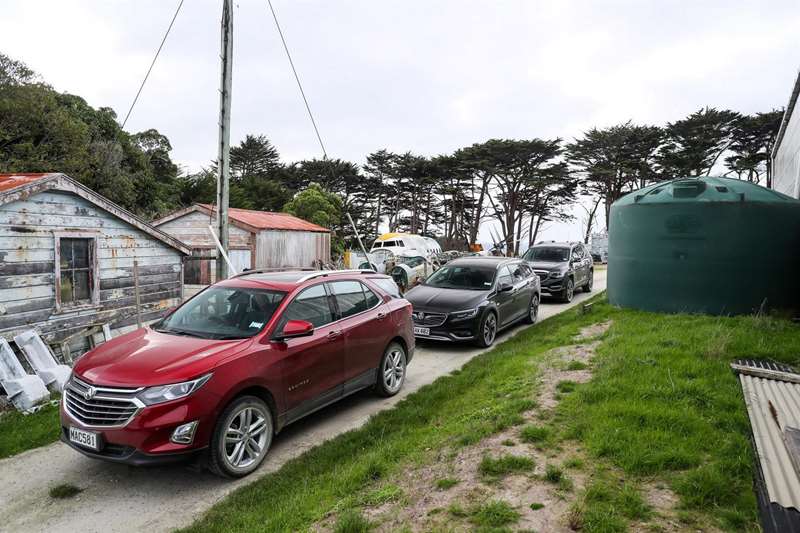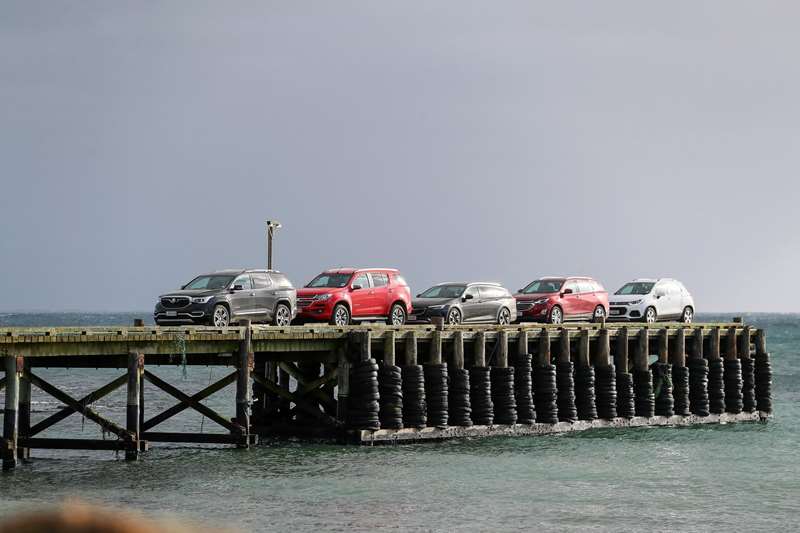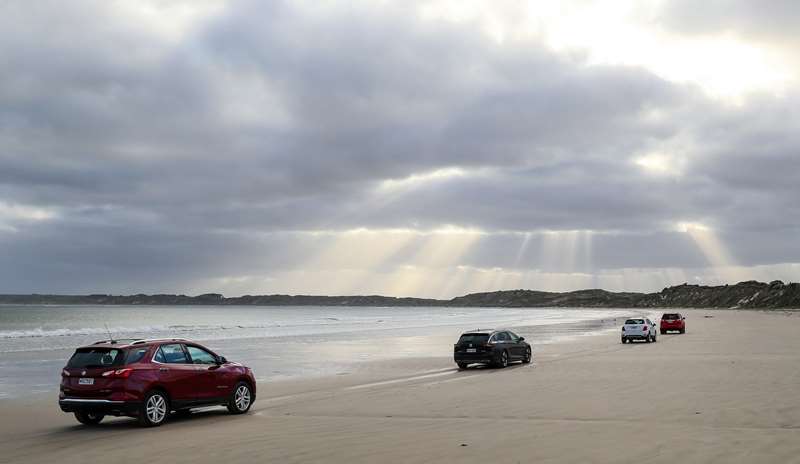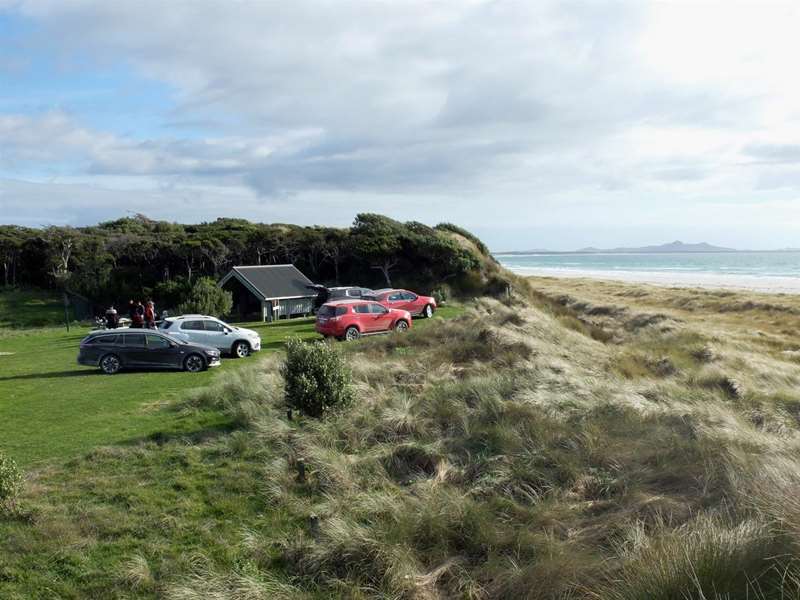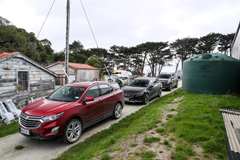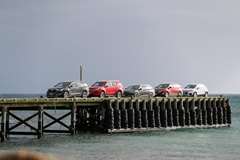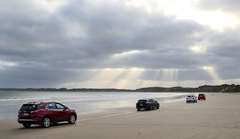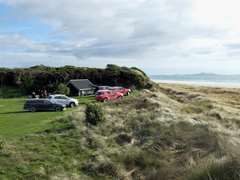David Thomson and Richard Bosselman were recently invited to the Chatham Islands to test drive a variety of Holden vehicles on the island’s roads and tracks.
When Holden NZ Corporate Affairs boss Ed Finn set on the bold scheme of organising a driving event on the Chatham Islands he began with a few pre-conceptions.
First and foremost, he figured that the event — loosely linking Holden’s 65th birthday with New Zealand’s easternmost outpost’s estimated 65million years of age — would have to feature the company’s Colorado ute in order to cope with the Chatham’s motoring conditions.
Surprised by both the extent (over 180km in all) and quality of Chatham Island roads, he engaged in a considered change of tack: ditch the Colorado, and focus instead on Holden’s current move away from conventional cars to SUV and semi-SUV machines.
Enter a cast comprising three SUVs — the US-sourced seven-seat Arcadia, the Colorado-derived Trailblazer and the mid-sized Equinox — and two semi-SUV pretenders — the Spark and four-wheel drive Tourer version of the current Commodore wagon.
Sure, there’d be a couple of off-road deviations where one of or both the Spark (front-wheel drive) and Tourer (low ground clearance) would need to be temporarily abandoned. But otherwise, the assembled contingent of journalists would travel about the island switching between each of the five vehicles according to preference, covering pretty much all of its roads in the process.
And so we did, more-or-less harmoniously, despite the shared penchant Drivesouth senior contributor Richard Bosselman and I developed for the Commodore Tourer, which irritated a few of our fellow scribes.
1Bosselman had it fixed in his mind that this was the first Commodore to have landed on the Chathams, and wanted to drive it on that basis. From my perspective, the Tourer’s combination of proper car handling dynamics, decently grunty 3.6L V6 engine and four-wheel-drive made it the briskest and most enjoyable of the assembled quintet to drive on Chatham Island’s generally well maintained gravel roads.
Beyond that, accepting that I didn’t see every car that lives on the island, the Tourer was likely to have been the fastest car of any kind within a 750km radius. It was the certainly the vehicle you’d pick, if required, to win an open-road race from any one corner of Chatham Island to the other.
The caveats here being that there’s actually an 80kmh open road speed limit, and wandering stock — both sheep and cattle — are a constant hazard. Never mind that driving quickly uses more fuel in a place where 91-octane unleaded costs $3.30 a litre.
Speeding, as it happens, doesn’t seem to be a major issue in these parts, although maybe it’s a case of what you don’t measure you don’t know. Driving while under the influence certainly is; it is up there with fishing and firearms offences as the most common matters dealt with by the district court during its periodic sittings at Waitangi.
It’s also a charge that will, like spilling the score of pre-recorded rugby test match to the publican, get you banned from the pub, as the Chatham’s community seeks to keep itself safe.
Another local motoring custom is the Chatham Island wave: failing to wave in a generous fashion when you meet an ongoing vehicle, or pass one going your way, is the height of bad manners.
As for the Chatham’s regular vehicle fleet, utes, while overwhelmingly popular, are by no means ubiquitous. Tucked away in various places are the more than two dozen Harley-Davidson motorcycles that give the Chatham’s micro fame as having the world’s highest per-capita concentration of these all-American bikes.
Last and not least, not all Chatham Island vehicles are as old and clapped out, as you might expect: case in point, a current model high-spec ute fully kitted out, parked outside the pub with the decals declaring it to ‘‘Orange Roughy’’ also revealing its exterior decor.
Mind you, an enduring memory of the Chathams’ vehicle fleet is the cars and trucks that no longer go. By and large they seem to have been abandoned where they expired, sometimes scavenged for parts, and left to rust in the damp, salty climate.
Perhaps that was why the presence of five brand-new Holdens caused a stir: they’d been shipped here (Holden was coy on the cost, but an obliging local had already told me the on the flight over that the normal shipping rate was $3000 per vehicle, each way) and were to be shipped off later, too. For a motor vehicle that makes it to the Chathams, leaving the island appears to be a most unusual fate.
Photos: David Thomson and Simon Watts/BMW Media
